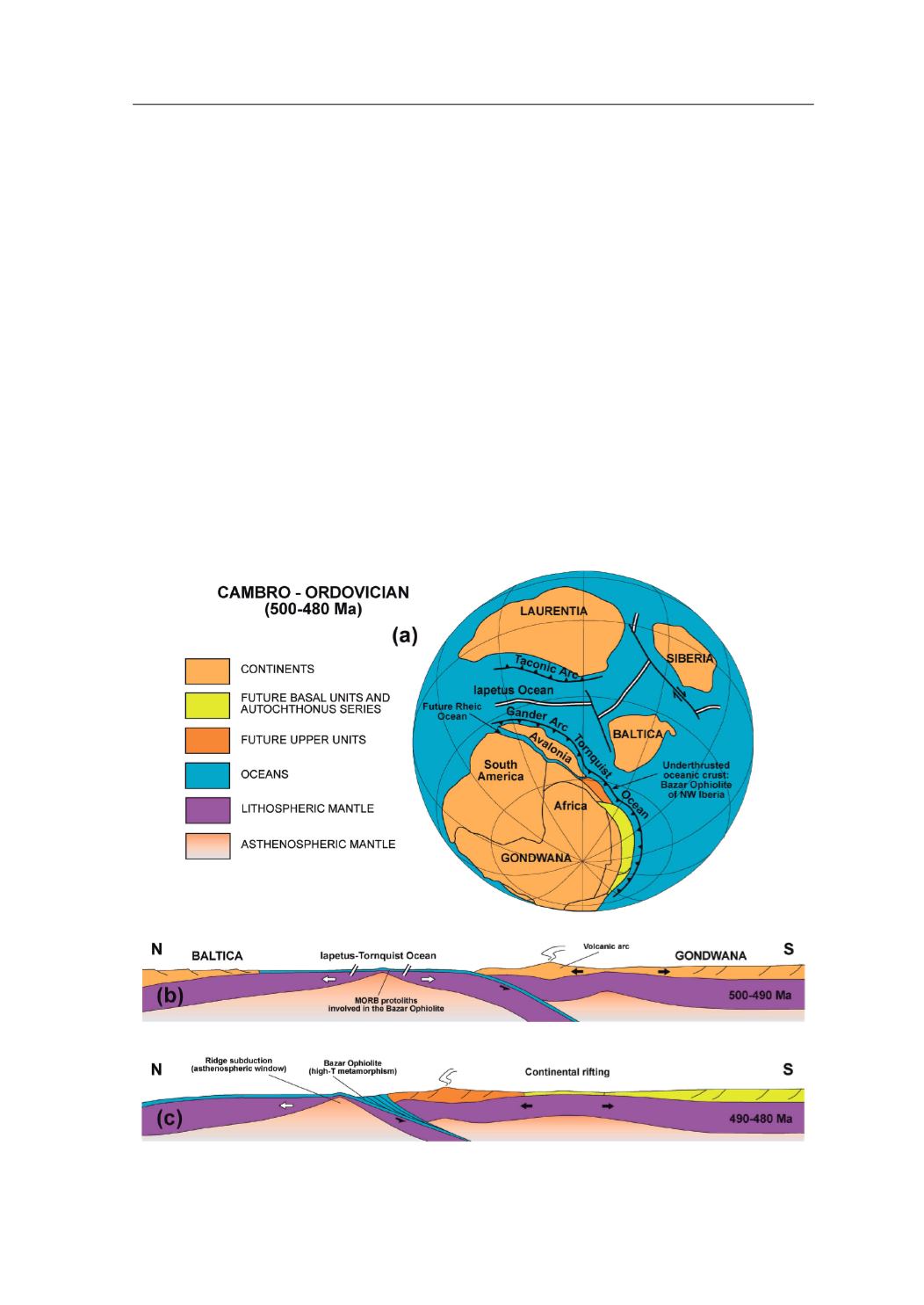
Zircon crystals extracted from an amphibo-
lite sample show large cores surrounded by new
recrystallized rims with irregular morphology
(Fig. 15a). They yielded two groups of concor-
dant U-Pb ages (Fig. 15b), which were treated
separately according to their different
176
Yb/
177
Hf
ratios (Fig. 15c). The first group has an average
age of 495 ± 2 Ma, interpreted as the age of the
gabbroic protoliths. The second group shows an
average age of 475 ± 2, thought to account for the
high-T metamorphism (Sánchez Martínez
et al.
,
2012). At variance with the rest of the ophiolites,
the Hf isotopic signature of zircons plus the ab-
sence of inherited grains point to a juvenile na-
ture of the mafic protoliths of the Bazar Ophiolite
as well as an apparent lack of interaction with
continental crust (Fig. 15d). These data and the
trace element composition suggest that the pro-
toliths of the mafic rocks were generated in an
oceanic context.
Taking into account the age, composition and
tectonothermal evolution of the Bazar Ophiolite,
it seems likely that this unit represents a litho-
spheric section of a peri-Gondwanan Cambrian
ocean. Although its tectonic setting is yet uncer-
tain, the N-MORB compositions shown by the
gabbros indicates participation of a mid-ocean-
ridge. The development of low to intermediate-P
granulitic metamorphism can be explained by
overheating related to the accretion of this units
to the base of a magmatic arc.
Based on the small
gap (
c.
20 Ma) between the formation of mafic
protoliths and the high-T metamorphism, it can
be suggested that the oceanic lithosphere pre-
served in the Bazar Ophiolite was remarkably
buoyant and prone to escape from accretion.
Alternatively, such high-T event could also result
from an ephemeral opening of an asthenospheric
window after subduction of a mid-ocean-ridge
(Fig. 16).
37
3. GEOLOGICAL FRAMEWORK
Fig. 16.
(
a
) Paleogeographical reconstruction and (
b, c
) two plate sections for the Cambrian-Ordovician boundary. Based
on Winchester
et al
. (2002), Arenas
et al.
(2007b), Gómez Barreiro
et al.
(2007) and Sánchez Martínez
et al.
, (2013).








